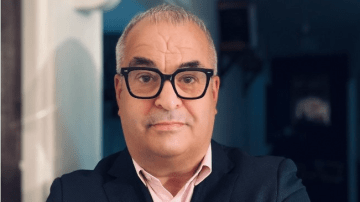Psychological safety is a vital foundation for creativity, collaboration, and high performance in any team or organisation.
In today’s wellbeing feature, Founder of Creative Wellness Amy McCae explores the importance of psychological safety in fostering innovation and collaboration. She examines how creating a safe environment for open communication and idea-sharing enhances creativity, productivity, and overall team success.
The concept of psychological safety has likely existed for as long as humans have formed groups, although Edgar H. Schein and Warren G. Bennis first introduced the term itself. In their 1965 book, Personal and Organisational Change Through Group Methods: The Laboratory Approach, they defined psychological safety as an environment ‘which encourages provisional tries, and which tolerates failures without retaliation, renunciation, or guilt.’ They summarised it as reducing ‘a person’s anxiety about being basically accepted and worthwhile’.
In recent years, Amy Edmondson, the Novartis Professor of Leadership and Management at Harvard Business School, has popularised the concept of psychological safety, making it both tangible and actionable. She defines psychological safety as ‘a belief that one will not be punished or humiliated for speaking up with ideas, questions, concerns, or mistakes, and that the team is safe for interpersonal risk-taking’.
Importantly, psychological safety is not about being nice or tied to personality traits, nor does it imply accepting lower performance or simply being equated to trust. As Edmondson explains: “In a team, psychological safety doesn’t mean comfort, total agreement, or guaranteed support of your opinions.”
Creating a psychologically safe environment is essential for fostering collaboration, creativity, and high performance.
Social scientists now recognise psychological safety as fundamental to fulfilling three basic human needs, including contributing to a community and achieving self-actualisation, as outlined in Maslow’s hierarchy of needs. It is increasingly considered essential for individuals to thrive and succeed across all areas of life.
In the workplace, psychological safety enhances numerous aspects of success, including team effectiveness, performance, productivity, and innovation. It reduces stress, increases job satisfaction, and supports higher standards of quality and safety. It also improves employee engagement and retention, strengthens decision-making and problem-solving, and can even lead to better health outcomes.
Creating a psychologically safe environment is essential for fostering collaboration, creativity, and high performance. When individuals feel safe to be themselves and to share their ideas without fear of judgment, the conditions for true innovation are created.
Consider times when you have been the most creative and innovative. What conditions existed? Describe what it is you needed at that time to be free to allow ideas to flow.
When you are anxious, stressed, or afraid the amygdala, which is responsible for the fight, flight, or freeze response is activated, you are unable to access the prefrontal cortex which is responsible for higher levels of thinking and executive function. This part of the brain is responsible for creative, visionary, and innovative thinking.
The neuroscience of psychological safety and innovation, according to Humentic, suggests that when people feel threatened – whether physically or socially the brain shifts into self-protection mode, making teamwork and creativity difficult.
 Trust and cooperation thrive in environments where oxytocin levels are high, while dopamine fuels motivation and a sense of reward. However, when mistakes are punished, it stifles neuroplasticity, limiting adaptability and learning. Chronic stress further hampers cognitive functions like memory, focus, and decision making, leading to more errors and disengagement.
Trust and cooperation thrive in environments where oxytocin levels are high, while dopamine fuels motivation and a sense of reward. However, when mistakes are punished, it stifles neuroplasticity, limiting adaptability and learning. Chronic stress further hampers cognitive functions like memory, focus, and decision making, leading to more errors and disengagement.
Studies consistently show that when employees feel secure speaking their minds, they are more likely to engage in imaginative and innovative thinking that leads to groundbreaking products and services. Google’s Project Aristotle, which analysed data from 180 teams totalling 37,000 employees, identified psychological safety as the key factor distinguishing the most successful teams from the others.
How do leaders create a psychologically safe workplace that supports innovation?
Amy Edmondson and Kim Scott suggest these four steps:
- Set the Stage: Clearly communicate the challenges beforehand while reminding tea mates that their ideas matter and that mistakes happen.
- Invite Participation: Encourage team members to share their thoughts, questions, and concerns, demonstrating that their contributions are valued.
- Respond Productively: If team members have concerns or admit mistakes respond with appreciation and then focus on solutions not blame.
- Establish Structures for Input: Develop forums where team members can provide feedback and discuss concerns openly.
 Additional ideas for leaders to consider:
Additional ideas for leaders to consider:
Include trauma, sensitive mindfulness-based practices in leadership training and with teams.
Studies suggest that when used correctly some practices may reduce stress, enhance cognitive function and flexibility, enhance creativity, improve emotional regulation, convergent thinking, and being open to new ideas.
Practice empathetic leadership. Imagine being in your teammates’ shoes.
Be fully present when sending emails and during all conversations. Validate their experience even if you don’t agree. People are open and receptive when they feel understood, and empathy supports feelings of belonging.
Cultivate curiosity and compassion in communication.
Ask open-ended questions. Actively listen. Practice self-awareness of how you feel, think, and speak. Ask open-ended questions with the intent to understand. George Bernard Shaw said: “The single biggest problem in communication is the illusion that it has taken place.”
Are you sure it has taken place?
Ensure wellbeing is a priority within your organisation.
People perform their best and are able to be innovative when their emotional, mental, and physical wellbeing are cared about. Assess the needs of your team members and then research to find the best proven support for their unique challenges.
Train emotional intelligence through all levels of the organisation.
Emotionally intelligent leaders are skilful at inspiring teams and more likely to be successful at motivating people and driving innovation. They are exceptional at understanding the needs of people and can recognise and influence the emotions of others.
‘You don’t adjust to the energy of the room, you shift it.’ ~ Amy McCae
Implementing these steps and ideas will support creating an environment where team members feel safe expressing themselves, thereby enhancing innovation.
What is one step you can take to support psychological safety and innovation within your team or organisation today?
Creative Wellness, founded by Amy after her transformative journey from chronic illness to holistic wellbeing, enhances organisational profitability by fostering a culture of wellness. Specialising in reducing turnover and boosting productivity through empathetic leadership, mindfulness, and comprehensive wellbeing training, Amy leverages her extensive certifications in mind-body wellness to empower industry leaders.
Click here to go to our Wellbeing section …
…
… and click here to subscribe to our daily newsletter – meaning you will never miss a thing.















